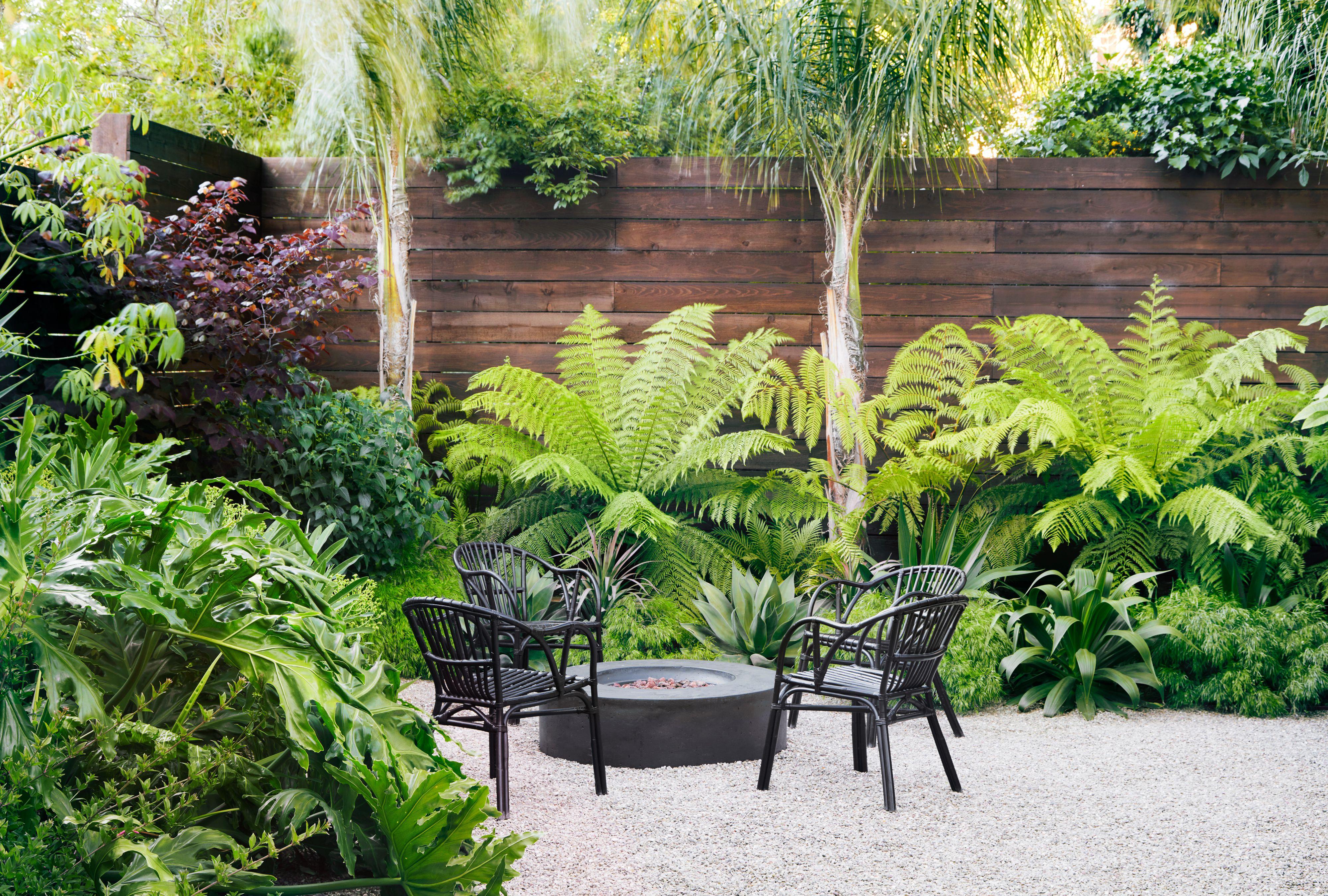The latest trend in garden design forgoes colorful flowers for a layered green-on-green look. When done right, green-drenching can have a calming quality. But it's not quite as simple as packing your yard with ferns and hostas.
"If you do it badly, it can easily be boring," says landscape designer Paul Broadhurst. He's a huge proponent of foliage-centric gardens, but points out that designing them requires a bit more nuance than a flower-filled border. "Because you're limiting what you see—just like a photo in black and white—you have to be more considered about it." Here, he and other design experts lay out the main do's and don'ts of green-drenching so you can create your own little green oasis.
• Paul R. Broadhurst is a Seattle-based landscape designer who heads up Broadhurst + Associates.
• Molly Wood is a Southern California-based landscape designer and head of Molly Wood Garden Design.
• Katie Tamony is the chief marketing officer and trend spotter at Monrovia Nursery Company.
Photo: Erica George Dines
1. DO Add Rustic Materials
Natural hues and organic shapes break up a green-drenched garden without disrupting the sense of serenity. Here, a twig fence and rough-hewn steps lend structure to a path while looking at one with the lush landscape.
Photo: Caitlin Atkinson
2. DON'T Limit Yourself to One Shade of Green
"Green is a spectrum of color, and it’s important to apply the same principles of balance and proportion in an all green garden as you would in one dominated by color," says Tamony. "Be sure to get variety by choosing some plants with different hues of green, from silvery to deep emerald."
Photo: William P. Wright
3. DO Add a Pop of Color
The contrast that's key to successful interior design applies to green-drenched yards, too. In this small Seattle yard designed by Paul R. Broadhurst, the pop provided by a simple pair of red chairs brings the whole landscape to life. "Reds in particular can look gorgeous with a lot of foliage," says Broadhurst. But remember: A little color goes a long way—the focus should still be on the green.
Gabriela Herman
4. DON'T Stick to One Height
"Don’t choose everything the same height," says Tamony. "Instead, think of creating layers of green: tall shrubs or trees, medium size shrubs, and ground covers." These layers will lead the eye upward and make a yard feel properly drenched in green.
Photo: Erica George Dines
5. DON'T Go Wild with Variegated Plants
When narrowing your focus to green plants, it's easy to get excited about variegated leaves. While some pattern adds interest to the landscape, an abundance can create a chaotic look, however. "Use leaf variegation sparingly," says Broadhurst. "It's an attention-hog. A garden with all kinds of fanciful plants with spots and stripes can looks restless."
Photo: David Tsay
6. DO Extend Greenery Up the Walls
"Don’t be afraid of adding greenery to your hardscape," says Tamony. "These living screens can soften hardscapes and help define spaces." A huge part of this garden's charm, for example, comes from the sense that it's enclosed in green, thanks to the ivy climbing the walls.
Photo: Dominique Vorillon
7. DO Vary Textures with Abandon
"When green drenching, texture is the key," says Wood. In this Southern California yard she designed, "big, fat green leaves like Aeonium urbicum and ligularia gigantea are a beautiful contrast to thin, vertical strapped grasses like miscanthus."
Photo: Carson Downing
8. DON'T Get Stuck on the 'Rule of Threes'
Tamony encourages gardeners not to get hung up on the common design tenet of planting in trios. "Planting multiples of a variety you love can create impact in a green-drenched garden," she says. "But you don’t just have to add three of everything. Vary the number of plants you use for each variety, adding or subtract as you grow into the garden and figure out what works."
Photo: Caitlin Atkinson
9. DO Create Negative Space
"Creating some negative space within the greenery is really important," says Wood. Because while you want to feel enveloped by green, you also want your yard to feel like a livable space, not a jungle. She achieves a balance with modern hardscaping and containers.



